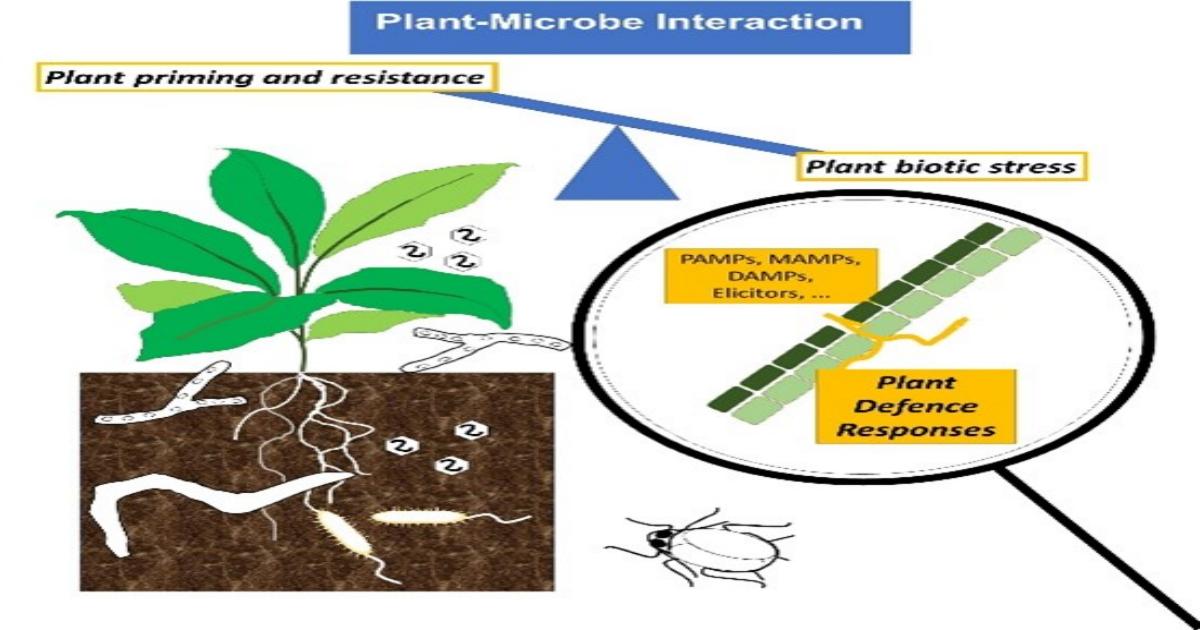New Horizons in Plant–Microbe Interactions
A special issue of Plants (ISSN 2223-7747). This special issue belongs to the section "Plant Protection and Biotic Interactions".
Deadline for manuscript submissions: closed (30 June 2024) | Viewed by 16698

Special Issue Editors
Interests: plant omics (proteomics, metabolomics, interactomics); phytohormones; plant biotic interactions and abiotic stress response
Special Issue Information
Dear Colleagues,
We invite you to join our SI on plant–microbe interaction research.
Plants interact and cope with many different organisms, and these biotic interactions shape their growth and development. Some of these interactions are beneficial and provide an advantage, including nitrogen fixation via symbiotic associations with bacteria or nutrient supply via mycorrhiza formation. Pests and pathogens are negative factors for crop production, but present selective pressure on plant societies and could be beneficial in limiting the spread of individual species. Furthermore, mild biotic stress could promote resilience and acclimatize plants to unfavorable conditions. All of these aspects are underlined by complex molecular mechanisms that are far from being fully understood.
This Special Issue aims to collect new findings in the field of plant–microbe interactions, including but not limited to the following aspects:
- Molecular mechanisms of plant–microbe interactions;
- Phytohormones and other secondary metabolites in plant–microbe interactions;
- Biological control and methods to promote plant resilience through interaction with beneficial microbes ;
- Novel tools in breeding pathogen-resilient cultivars;
- Omics analyses to understand plant–microbe interactions, including transcriptomics, proteomics, metabolomics, lipidomics, and volatolomics studies.
We welcome both reviews and research articles.
Dr. Martin Černý
Dr. Veronika Hyskova
Guest Editors
Manuscript Submission Information
Manuscripts should be submitted online at www.mdpi.com by registering and logging in to this website. Once you are registered, click here to go to the submission form. Manuscripts can be submitted until the deadline. All submissions that pass pre-check are peer-reviewed. Accepted papers will be published continuously in the journal (as soon as accepted) and will be listed together on the special issue website. Research articles, review articles as well as short communications are invited. For planned papers, a title and short abstract (about 250 words) can be sent to the Editorial Office for assessment.
Submitted manuscripts should not have been published previously, nor be under consideration for publication elsewhere (except conference proceedings papers). All manuscripts are thoroughly refereed through a single-blind peer-review process. A guide for authors and other relevant information for submission of manuscripts is available on the Instructions for Authors page. Plants is an international peer-reviewed open access semimonthly journal published by MDPI.
Please visit the Instructions for Authors page before submitting a manuscript. The Article Processing Charge (APC) for publication in this open access journal is 2700 CHF (Swiss Francs). Submitted papers should be well formatted and use good English. Authors may use MDPI's English editing service prior to publication or during author revisions.
Keywords
- microbe
- biotic stress
- biotic interaction
- biological control
- molecular mechanisms
- resilience
- tolerance
- omics
- lipidome
- proteome
- metabolome
- transcriptome
- volatiles
- phytohormones
- plant immunity
Benefits of Publishing in a Special Issue
- Ease of navigation: Grouping papers by topic helps scholars navigate broad scope journals more efficiently.
- Greater discoverability: Special Issues support the reach and impact of scientific research. Articles in Special Issues are more discoverable and cited more frequently.
- Expansion of research network: Special Issues facilitate connections among authors, fostering scientific collaborations.
- External promotion: Articles in Special Issues are often promoted through the journal's social media, increasing their visibility.
- Reprint: MDPI Books provides the opportunity to republish successful Special Issues in book format, both online and in print.
Further information on MDPI's Special Issue policies can be found here.







